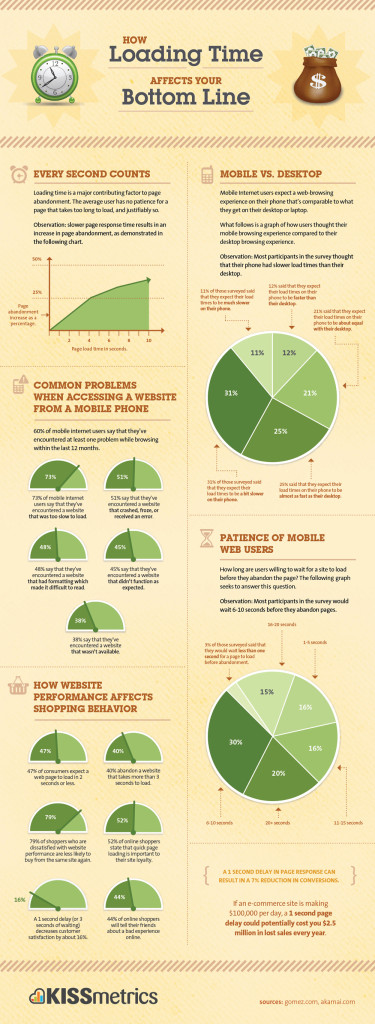
Is Your Website Leaking Traffic and Leads Behind Your Back?
Tags: conversion optimisation • Design • Google PageSpeed • lead generation • traffic conversion • web performance • website audit • website conversion
It been Wait and Watch game ever since your organisation launched their new revamped website! 1 month gone! 2 months gone! But there is no trace of any soul trespassing the website! Is your marketing proving to be ineffective or is it the website the culprit which is leaking traffic and leads?
Think of it! After cracking the whip on your team to deliver an awesome website, no traffic or website conversion into leads? So much efforts for nothing? You are not alone!
Steve Jobs one said “Design is not just what it looks like and feels like. Design is how it works!” Rightly so!
Your website is much more then how it looks! Its more about how it helps your potential customers, investors and general public find the right information (Information Architecture) in quickest possible time. Visitors these days are impatient and do not have time to search endlessly. The more your website helps your customers, the more leads you will generate eventually.
An independent Website Audit should be done to map a client journeys through the website: from initial search stage, to landing on the website, and how consistently and effectively the landing pages are engaging the visitors. This customer journeys should be frequently tested for quality, consistency and design effectiveness. It has been seen that little improvement in design can have remarkable effect on client’s comfort level increasing the chance of buying products/services besides generating leads.
With the help of a website audit,  managers would know where the website is leaking traffic and leads so as to make necessary changes in the website design. One of the best source where websites leak traffics are 404 error pages. Majority of websites fail to bringing back traffic from 404 error page to the main website. The 404 error pages are either boring, neglected or doesn’t help visitors navigate to the right page at all. The visitor either tries to correct the url on their own, hits the back button or navigates away. From SEO perspective, few 404 errors won’t affect your website’s rankings however one should always look for 404 errors report in Google webmaster tool to correct the errors and avoid providing bad user experience to visitors. On a side note, here are some good examples of 404 error page designs for inspiration.
managers would know where the website is leaking traffic and leads so as to make necessary changes in the website design. One of the best source where websites leak traffics are 404 error pages. Majority of websites fail to bringing back traffic from 404 error page to the main website. The 404 error pages are either boring, neglected or doesn’t help visitors navigate to the right page at all. The visitor either tries to correct the url on their own, hits the back button or navigates away. From SEO perspective, few 404 errors won’t affect your website’s rankings however one should always look for 404 errors report in Google webmaster tool to correct the errors and avoid providing bad user experience to visitors. On a side note, here are some good examples of 404 error page designs for inspiration.
How to plug the leaks?
Companies needs to take a step back to understand at what level of website design, improvements can help reduce leakages.  While at design phase, managers should create a customer journey map to know how the site will be used and also to provide differentiated experiences that drives on-site conversion and sales. Furthermore they need to understand various buyer personas to map out the navigation system and how best to provide information with few clicks. Regular testing should be done to identify areas that isn’t inspiring confidence in customers’ mind.
While at design phase, managers should create a customer journey map to know how the site will be used and also to provide differentiated experiences that drives on-site conversion and sales. Furthermore they need to understand various buyer personas to map out the navigation system and how best to provide information with few clicks. Regular testing should be done to identify areas that isn’t inspiring confidence in customers’ mind.
A customer journey map could be like Home page (landing page) > Navigation > (looks for right information) Contents (how it convinces customers to take action) > Call to Action (did the customer take the intended action?).
When a customer’s journey on the website is cut short due to whatever reason, one way to help regain traffic would be to show an Exit popup as an ernest effort to convince the customer to stay back longer and do business. On an average 55% visitors on a website spends no more then 15 sec. So there is a huge scope of improvement.
1- Bounce Rate
Another reason for websites leaking traffic and leads is their high bounce rate. Websites with high bounce rate should make efforts to reduce the same as lost traffic is lost business and your competitors are certainly enjoying the benefits. Check Google Analytics regularly for bounce rate improvements and review the exit path of the visitors. Analyse what landing pages are real culprits and optimise them through design tests. Some of the ways to improve the bounce rates are:
- Improve navigation
- Improve website download speed
- Remove pop-up ads, if any
- Optimise the contents to be relevant
Here is an interesting infograph on bounce rate for various industries. Check, based on the type of your website, if the bounce rate falls within the industry standard.

2- Landing Page Relevancy & Design
For sure you would be doing SEO for your Website(s) and maintaing the landing pages for each keyword. Are you not? Here lies another culprit!
SEO managers should maintain a proper report of all the landing pages and the keyword it is linked to to check only correct landing page is rankings for that keyword. If there is low relevancy of the landing page, the bounce rate is going to be high. By relevancy we mean the topic and the contents of the landing page should be related to the keyword. If the keyword is “used cars”, the landing page contents should focus on used cars and not on any other topic.
Additionally, and more importantly, if the landing page design isn’t attractive and convincing, it will further contribute to high bounce rate besides harming the online reputation of your brand.
3- Mobile Friendly Website
With growing use of mobile phones for surfing and other regular work, more and more searches are being done on the mobile. So, if visitors coming from mobile searches don’t see your website compatible on their mobile phones, they will instantly close and move away shutting doors on possible business and leads.
In fact Google acknowledged the growing power of mobile usages (more specifically mobile searches) and recently updated their search alto with updated called Mobilegeddon to give preference to mobile friendly websites in mobile searches. If Google can why cannot every business owner follow and give importance to providing seamless user experience on mobile platforms?
4- Missing Call-To-Actions
Who wouldn’t like to have a chocking sales pipeline or having a website that is converting traffic into potential business regularly? But have you done your handwork for the same and does your website or the landing pages have required tools and elements to convert traffic into potential customers? If not your website could be acting as walls reflecting back everything that is arriving!
First step is to see if you are effectively using Call-to-Action elements such as Quick Quote form, Subscribe to newsletters sections or download for free buttons. If yes, are they really convincing visitors into performing intended action?
5- Website Speed
Have you ever visited a website that look forever to load? What was the logical step you took? Did you  not close it after few seconds of wait? This is exactly what visitors to your website would do if it takes more then few seconds to load. Here is another way your website is leaking traffic and possible leads.
not close it after few seconds of wait? This is exactly what visitors to your website would do if it takes more then few seconds to load. Here is another way your website is leaking traffic and possible leads.
General visitors and potential prospects expect fast, quality Web experiences across web and mobile platforms they use. As today’s visitors and online shippers don’t sit on their laptop a lot and are more mobile, they may be visiting your website on their car’s console, on their tab while in the kitchen or even browsing on their mobile in a flight. So failure to deliver rich, engaging and fast Web experiences can result in lower revenues and higher costs. If you have an Ecommerce website, it would be a suicide to have a slow loading website. Hear this! 10 Seconds is the maximum threshold for a visitor’s patience and majority of online shoppers will abandon the website after 3 Secs of wait.
Do a Google PageSpeed test and see if the page speed is in red zone. Google will give you good amount of assistance and links to resources that will help you improve page speed. If you have a WordPress powered website, there are plugins available to show the page speeds including this one.
While a bad piece of programming code, unoptimised database or heavy images can slow down your website, see if your server too isn’t to blame. Having a slow loading website doesn’t let traffic enter the website which might have been converted into potential business.
Going into the details of how to optimise your website loading time is out of the scope of this post however you can read one of our recent article on how to increase Google page speed score in 15 min.
Additionally based on a finding, a one second delay in loading can result in:
- 8.3% increase in bounce rate
- 9.3% fewer page views
- 3.5% decrease in conversions
- 2.1% decrease in cart size
Top help you see the current speed of your website and how it can be enhanced, here are some of the top tools which you can use to test your website loading speed:
Google PageSpeed test
Yahoo! YSlow
WebPageTest
Pingdom Website Speed Test
Slow loading websites and high bounce rates may not be leaking traffic and leads rather they are in fact traffic and business killers.
So overall it’s not enough to have a beautiful looking website; rather it should work for your business and it should provide rich and engaging experience across web and mobile platform. Regular website audit and web performance tests will help assess it’s performance and plug gaps that helps leak traffic and potential business to your competitors.
We would love to hear your story and your recent experience where you improved your website performance and reduced leakages for our readers.
 Previous Post
Previous Post Next Post
Next Post

Nice post!
As we know that call to action is one of the key elements in generating sales leads as a result of your marketing activities. The more effective CTA is to the visitor, the more likely they will convert into a potential lead.
Yes this is great article to focus on lead and traffic. You have left Google local listing option that is also a major part of web traffic. Although Google knows where everyone goes on the web and what they do.